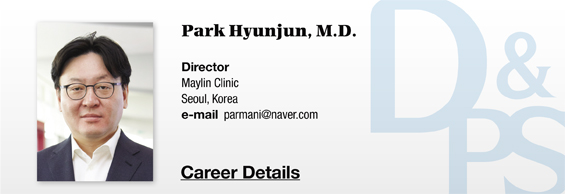

In general, threads used for facelift are also used in the neck area. The anatomical characteristics of the neck area are considered for thread selection.
The anatomy of the neck skin is divided into five layers; subcutaneous adipose tissue, platysmal muscle, deep adipose tissue, submandibular gland, and deep myo-facial layer. Aging affects all five layers leading to the below four types of neck lines.
① Horizontal neck lines
② Platysmal banding
③ Fine wrinkles
④ Neck skin drooping
In short, plain PDO can be placed first to increase the overall elasticity of the neck skin and screw thread or mesh type thread is used to correct horizontal lines. If severe sagging is seen along the jawline and the neck, cogged thread can be used to pull up the sagging skin.
The objective of neck wrinkle treatment can largely be divided into two:
[Advertisement] MAGNUM(Q-switched Nd:YAG Laser) – Manufacturer: (www.i-dana.com)]
1. Improving the Overall Elasticity of the Skin in the Neck Area
In the past, botulinum toxin in the form of MISBIB was used extensively in the neck area for improving elasticity. As the neck has thinner skin and less cushion effect of the fat pads compared to other areas, botulinum toxin easily spread. Therefore, one should be aware of the risk of dysphagia and practice caution during injection. Adding non-cross link HA or PN(polynucleotid) to the botulinum toxin injection prevents excessive spreading of botulinum toxin and lowers the risk of complications. HA and PN bring an added benefit of fine wrinkle improvement.
For improved elasticity, place plain PDO strands parallel to the SCM and at 45º angle(parallel to platysma).
.png)
Figure 1. Place plain PDO strands parallel to the SCM and at 45º angle(parallel to platysma).
And placing the simple PDO threads or short cogged threads along the mandibular border can sharpen the outline of the jaw.
-To be continued




















